Library

Izapa, Capitol of Mesoamerica Antiquities
Nestled in the lush landscapes of southern Mexico, Izapa stands as a captivating testament to the rich tapestry of Mesoamerican antiquities. Renowned as the ceremonial and political capital of its time, Izapa exudes an enigmatic allure that draws archaeologists and history enthusiasts alike.
At the heart of Izapa’s archaeological wonders lies the mesmerizing Tree of Life stone, a celestial masterpiece that adds an extra layer of mystique to this ancient capital of Mesoamerican antiquities. Carved with exquisite precision, the intricate bas-relief on the monumental stela unveils a cosmic narrative, depicting mythical figures and intertwined cosmic elements. The archaeological marvel of Izapa, adorned with the Tree of Life stone, beckons explorers to embark on a journey through time and space, unlocking the secrets of a civilization that left an indelible mark on Mesoamerican history.

Lands of the Book of Mormon
The historical puzzle surrounding Joseph Smith’s identification of Palenque as the land of Zarahemla adds a captivating layer to the tapestry of Mormon history. In the early 19th century, the founder of the Church of Jesus Christ of Latter-Day Saint movement, Joseph Smith, expressed a belief that the ancient city of Palenque, nestled in the jungles of Mexico, was synonymous with the Book of Mormon’s Zarahemla. This intriguing assertion connects the spiritual narrative of the Book of Mormon with the tangible remnants of Mesoamerican civilizations. The juxtaposition of religious vision and ancient ruins invites us to ponder the intricate interplay between faith, revelation, and the unfolding narrative of Mesoamerican antiquity in the quest to understand the origins of Zarahemla as envisioned by Joseph Smith.
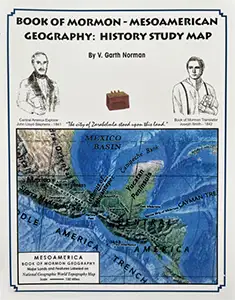
Book of Mormon – Mesoamerican Geography: History Study Map
Paperback – 2006
V. Garth Norman
Dr. Bruce Warren stated: “The Book of Mormon, translated by the unschooled young Joseph Smith from gold plates delivered to him by an angel, became the keystone scripture of the Church of Jesus Christ of Latter-Day Saints (organized by Joseph Smith soon after he published the Book of Mormon in 1830). The Book of Mormon is now adding to faith knowledge (2 Peter 1:5), and taking its place as a genuine Mesoamerican chronicle, related in parts to the Popol Vuh, the sacred book of the Quiche Maya of Guatemala. . . .Norman’s geography map (at the end of this book) is backed by 4 decades of a comprehensive study of the historic text, archaeological evidence, and topographic and environmental data.”
$20.00 – Available by contacting: books@ancientamericafoundation.org

Cubit Connection in Ancient World Migrations
Paperback – July 31, 2018
Mr. V. Garth Norman
Cubit Connection is about migrations of ancient civilizations from the Middle East to other regions of the world. Cubit measurements and other significant codes show specifically where major ancient civilizations in the Americas came from and how they spread throughout the Americas. In the 1950’s Thor Heyerdahl showed migration patterns that followed of people whose rafts were carried across the oceans on ocean currents. The sweet potatoe was transported this way from Peru to the Easter Islands. Recently, Michael Blake published his work on corn in ancient Central American civilizations being taken in migrations to North and South America. Likewise, ancient measurements used in the Old World were also used to build antiquities in the New World.
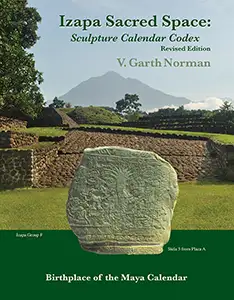
Izapa Sacred Space: Sculpture Calendar Codex
Paperback – 1976
V. Garth Norman
Izapa Temple Center, Southern Mexico near the Pacific Coast is the birthplace of the Maya 260 Day Sacred Calendar. Ancient astronomers, mathematicians, and builders created this unique Temple Center. Popol Vuh correlations exist with monuments there including Stela 25. Izapa’s Tree of Life Stela 5 is famous. Izapa is located at 14.8 degrees North Latitude where the Sun Zenith Passage occurs on August 13 and April 30 marking 260 days (9 month human gestation cycle). Izapa (ca. 1500 and 600 BC datings) is related to Nazca, Peru located at 14.8 degrees South Latitude (ca. 100 BC). Ancient Pacific shipping vessels transported Izapa’s astronomy, calendar, standard measure and cosmology to Nazca. The 260 Day Calendar markings can be found in numerous Central, North and South American sites all which date after Izapa’s time–suggesting that Izapa was indee
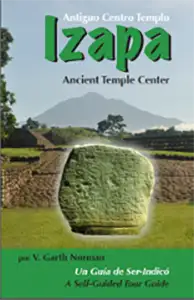
Izapa Sacred Space: A Self-Guided Tour Book
Paperback (English & Spanish) – 210
V. Garth Norman
Includes: Photos and descriptions of Group A and B Stelae. Color pictures of small sections of the Maya 3-hour Temple Ceremony. $15.00 – Available by contacting: books@ancientamericafoundation.org.

Aztlander: The Magazine of the Ancient Americas
PDF – January 2022
Dedicated to V. Garth Norman
The Azlander is a free-flowing, hyperactive on-line publication with monthly articles focusing the Ancient Americas.
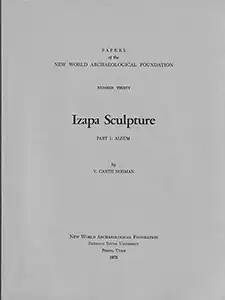
Izapa Sculpture Part 1: Photo Album
Paperback – 1976
by Mr. V. Garth Norman
This album presents the full-page illustrations of the principal carved monuments described in “Izapa Sculpture, Part 2.” They are published separately to draw attention to these extraordinary carvings so that one may view the plates easily while reading the detailed descriptions.
$25 for Volume 1 and 2 set (includes shipping and handling.)

Izapa Sculpture Part 2: Text
Paperback – 1976
by V. Garth Norman
Part 2 of a complementary two-volume set presents the documentation of Izapa sculpture, including, descriptions, comparative data, and suggested interpretive possibilities. This publication is a companion to the Izapa Sculpture, Part 1: Album
$25 for Volume 1 and 2 set (includes shipping and handling.)
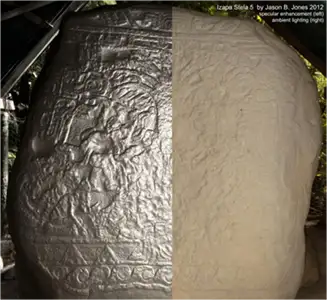
Considering evidence of Middle Eastern Influence on Mesoamerican Temples
Electronic – 2012
Jason Jones Ph. D.
This study investigated evidence of interaction between pre-Columbian America and the Middle East to ascertain whether the Mayans could have been influenced by, assimilated with, or partially descended from the nations written about by Mormon in the ancient record of The Book of Mormon.
This pilot study funded by the Lord Rootes Memorial Fund used advanced 3D imaging (Reflectance Transformation Imaging and conventional photogrammetry) to shed light on the bas reliefs and explore the implications of their content with the support of archaeologist V. Garth Norman.
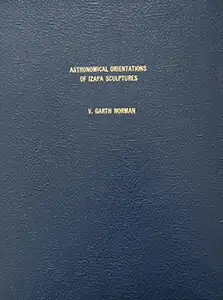
Astronomical Orientations of Izapa Sculptures
PDF – 1980
V. Garth Norman
Considered one of the earliest publications on ancient Mesoamerican calendars, particularly those associated with pyramid and temple complexes. The book highlights the importance of astronomical observations in Mesoamerican cultures and how they were integrated into religious and calendrical practices.
V. Garth Norman’s fieldwork at the Izapa site, particularly his observations of solstices and other celestial events, provided important data for understanding the astronomical alignments and orientations of the sculptures and stelae at the site.
Since 2000, most Mesoamerican studies have been on ancient calendars associated with ancient pyramids and Plazas at Temple Centers—especially the sacred Mayan 260-Day (human gestation) calendar that was initiated at Izapa, Mexico (ca. 1500 BC by Olmecs) because of its 14.8 degrees latitude.
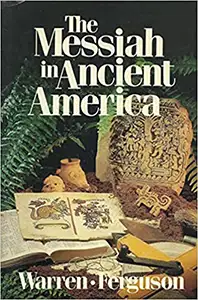
The Messiah in Ancient America
Hardcover – 1988
Bruce Warren, Thomas Stuart Ferguson
Why do numerous Indian histories affirm so clearly the the fair god of Mesoamerica descended from heaven and taught them such things as love and virtue, the law of the fast, and a promise someday to return to them? How did the Indian people of Mesoamerica in the 14th century come to believe that their god, Quetzalcoatl, was crucified in A.D. 30 and resurrected three days later. How could Joseph Smith have known in the 1820s that at least three huge volcanoes in Mexico and El Salvador each erupted with gigantic destructive lava and ash that buried several cities at the time of the Savior’s crucifixion? Why do the ancient sacred books of Mesoamerica reflect knowledge of the Old Testament? How did the ancient people of Mesoamerica as early as the third century B.C. have a very similar Tree of Life as found in the Old World? The answers to these questions, and many more, are explained in the pages of this book. The evidence is conclusive, even overwhelming – connecting the Book of Mormon to recent scientific discoveries in Mesoamerica.
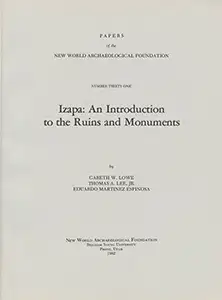
Izapa : An Introduction to the Ruins and Monuments
Paperback – 1982
Gareth W. Lowe, Thomas A. Lee Jr., Eduardo Martinez Espinosa
Izapa is one of the largest sites known on the Pacific coast of North or Central America and was a key location in the Soconusco region throughout Chiapas prehistory. Explored by the NWAF field project from 1961-1965, Izapa is well known for its numerous stone monuments and unique iconography of the Late Formative period. This work presents an overview of the project findings, analysis of monuments in context, a discussion of the ritual roles for Izapa’s sculptured iconography and monument plazas, and a concluding chapter reviewing the site’s sociopolitical and culture-historical role in the Soconusco and beyond.
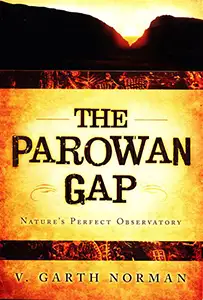
The Parowan Gap: Nature’s Perfect Observatory
Paperback – 2007
V. Garth Norman and Dr. Lance Harding
In about 700 AD to 900 AD Natives from Mexico and Guatemala migrated to Southwest North America where they created a Temple Center at the Parowan Gap in what is now Southern Utah. They used the same Babylonian and Egyptian Cubits to create the site, and documented the famous sacred Maya 260-Day Calendar with the beginning date on August 12, and the ending date on April 29 (in Mesoamerica the beginning date is August 13 and the ending date is April 30).

Lidar reveals the entire kingdom of Izapa during the first millennium B.C.
Electronic – 2018
by – Robert M. Rosenswig
Using Lidar technology, this investigation of the ancient Mesoamerican kingdom of Izapa reveals a network of urban centres laid out according to shared design principles. While the capital city of Izapa has long been known, the authors’ research reveals, for the first time, the entire Izapa kingdom. This work provides an important new insight into the origins of political hierarchy and urban life in pre-Hispanic Mesoamerica.
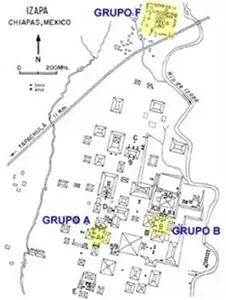
Izapa Stela 5, Mexico: An Analysis Based on Gadamerian Aesthetics
Electronic – 2018
Irene Durante Montiel
This study aims to analyze the scene represented in the Izapa Stela 5 from the Gadamer’s aesthetic, to unveil the link between myth and logos in the horizon of understanding the Mayan civilization. The beautiful nature of Stela 5 narrates the life-death event linked to the Mayan cosmogony and exposes the consciousness of the actual history of being and making of the Mayan culture communicating contents of life and death as axes of aesthetic experience.
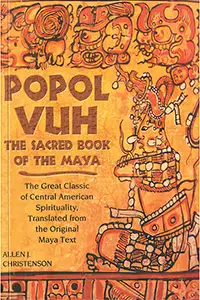
Popol Vuh
Paperback – 2003
Translated by Allen J. Christenson
Popol Vuh is a sacred book of the Maya people that tells the story of creation and the history of the Quiché Maya, who lived in what is now Guatemala. It describes the mythical and historical journey of the Maya people, including their origin, the creation of the world, the birth of the gods, and the adventures of their heroes. It also includes moral lessons and instructions on how to live a good life. The Popol Vuh is an important piece of Maya literature and cultural heritage, as it provides insight into the beliefs, customs, and worldview of this ancient civilization.

The Book of Chilam Balam of Chumayel
Hardcover – 1933
Translated by Ralph L. Roys
The Book of Chilam Balam of Chumayel is a sacred text of the Maya people, specifically from the Yucatan Peninsula in Mexico. It contains a collection of stories, prophecies, and historical accounts that were recorded by the Maya scribes in the 16th and 17th centuries.
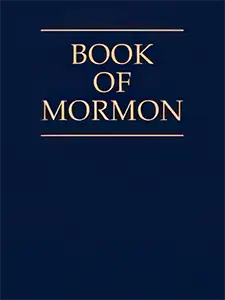
The Book of Mormon
Digital – 2023
Translated by Joseph Smith Jr.
The Book of Mormon tells the story of ancient peoples who lived in the Americas, including their religious beliefs, wars, and interactions with God. The central figure in the book is a prophet named Lehi, who was commanded by God to leave Jerusalem with his family and travel to the Americas. It contains the most detailed ancient account of the world’s tree of life and parallels the Izapa Stela 5 Maya Tree of Life Stone and contains a record of Christ’s visit to the Americas.
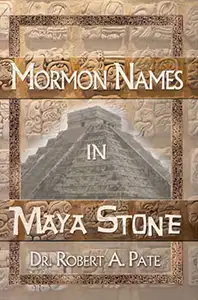
Maya Names in Maya Stone
Paperback 2009
Robert A. Pate
The Book of Mormon is a true history of real people. So where is the real hard evidence of their existence? Show me one Maya hieroglyphic inscription that testifies of these things. This challenge, expressed to the author by Diane E. Wirth, an excellent scholar and author on Book of Mormon evidences in Mesoamerica and the Middle East, shows the frustration typical of many in the field of Mormon antiquities research. The parallels are legion, but the truly hard irrefutable evidence has remained unexposed.
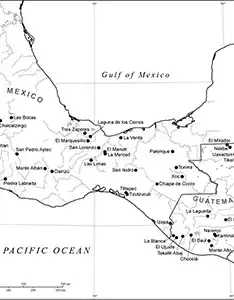
Stone Monuments and Preclassic Civilization
Electronic – 2010
by Clark, Guernsey, Arroyo
This book addresses the early development and spread of Mesoamerican civilization and the role(s) of stone monuments in that process. Book chapters grew from papers presented and discussed at the Dumbarton Oaks conference on early Mesoamerican sculpture held in Antigua, Guatemala, in October, titled “The Place of Sculpture in Mesoamerica’s Preclassic Transition: Context, Use, and Meaning.”

Discovering Lehi: New Evidence of Lehi and Nephi in Arabia
Paperback – 1996
Llynn M. Hilton, Hope A. Hilton
This “fascinating Mormon odyssey” was first commissioned by The Ensign. But no mention was ever made in that work of the Lihyan (Arabic transliteration for “The People of Lehi”) civilization and the remarkable possibilities found in its Arabian ruins. In addition to the Hilton’s original research, they have discovered volumes of new evidence and new possibilities. The findings in this book may just be the sign saying, “I, Lehi, was here.” It is possible that Lehi and Nephi were actually great missionaries; that they converted thousands as hinted at in D&C 33:8-10. This new evidence suggests that Arabian converts of Nephi and Levi grew in number and influence and prospered (as all civilizations of The Book of Mormon were promised) over a period of 1000 years until they actually ruled Arabia for an additional 300 years. This work may be the most remarkable evidence currently available that Levi and Nephi actually existed and may be the only research to date to actually pinpoint Book of Mormon locations with any degree of accuracy. It is astounding that the city Nephi referred to as Nahum actually exists today as a city of ancient origins. It conforms to the Book of Mormon description of the burial place of Ishmael and the point where they changed their direction of travel from south-southeast to nearly eastward toward Bountiful. Here within our very grasp may be the first physical and historical evidence that Lehi and Nephi, lived, breathed, struggled and taught the gospel as marvelous and influential prophets of The Book of Mormon.
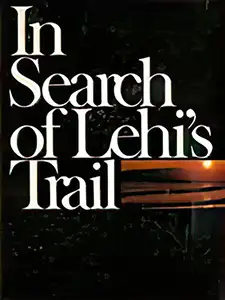
In Search of Lehi’s Trail
Paperback – 1976
Lynn M. Hilton
First published in the Ensign in September and October 1976, it has now been expanded to book length, with additional details on some of the author’s personal experiences during their travels throughout the Arabian peninsula – in search of Lehi’s trail.
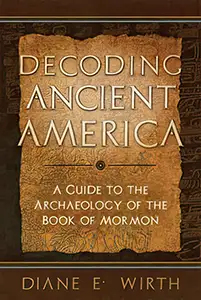
Decoding Ancient America
Paperback – 2007
Diane E Wirth
A legend of the Tree of Life. A belief in the Creation story. A religion of a heavenly father, mother, and their son who died to save us all – and that’s just the beginning. Use this book as your guide to the remarkable similarities between ancient Mesoamericans, and the peoples of the Book of Mormon. With new and exciting insights, pages full of thoughtful comparisons, and compelling illustrations, Decoding Ancient America will capture the interest of anyone curious about Book of Mormon archaeology.
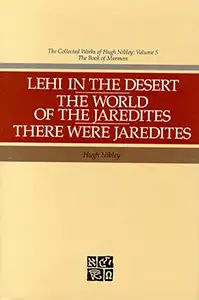
Lehi in the Deseret, The World of the Jaredites, There Were Jaredites
Hardcover – 1988
Hugh Nibley
Dr. Nibley’s broad knowledge of the ancient Near East, and especially his fluent Arabic, allowed him to reconstruct the probable cultural backgrounds of people like Lehi and Nephi and to read between the lines in the Book of Mormon to identify evidences of their cultural world. Much of that evidence is quite direct and strong; other times it is subtle and more remote. The kinds of ancient Near Eastern facts and observations Dr. Nibley correlates with details in the Book of Mormon are drawn from areas of language and literature, archaeology and history, culture and politics. Taken alone, few single factors are overwhelming impressive, but all together they fit very convincingly into what Dr. Nibley calls “The Big Picture.” As he writes at the conclusion of his findings: “There is no point at all to the question: Who wrote the Book of Mormon? It would have been quite as impossible for the most learned man alive in 1830 as it was for Joseph Smith.”

Finding Christ While on the Trail of the Three Brothers
Paperback – 2021
Keith Handy, Carma Handy
For nearly 1500 years the Maya had been the divine kings of the rainforest. For nearly 1500 years they they pushed back the jungle to build hundreds of magnificent cities, inhabited by some of the best and brightest artists, engineers, astronomers, mathematicians and architects the world had ever seen. This is a story of their “One true God” and our effort to find Him. His ancient name was Itzamna. They called him Kinich Ahau, the Lord whose face showed the light of the sun. On the sides of temples, on great stone monuments known as stelae and on incense burners, they showed their God descending into the mouth of death and hell. They showed Him, rising from the dead with the breath of life in His nostrils. And, they showed Him descending from heaven to bless the lives of His people. And they left behind their witness in stone that they had personally seen him and that he had walked amongst them.
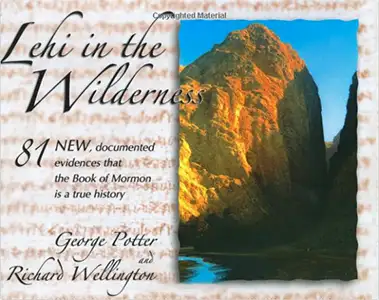
Lehi in the Wilderness: 81 New Documented Evidences
Paperback – 2003
George Potter Richard Wellington
When we started this project, if we had realized the time, effort and difficulties that would have been involved, I am not sure that we would have continued with it. But through tedious research a study of books and papers on the subject, and grueling detective work in the middle east, we found a route showed Lehi heading east from Jerusalem to travel the Way of the Wilderness to arrive at wadi Tayyib al Ism, our proposed site for the Valley of Lemuel. The route then travels along the Frankincense Trail, our preferred route to southern Arabia, and turns east at Ramlat Sabatayn, where we feel is the most probable location for Nahom. The route east heads between the mountains and the desert, as we propose in this book, and ends at Dhofar. Even Khor Rori, our suggested site for the place Bountiful where Nephi built his ship, is included.
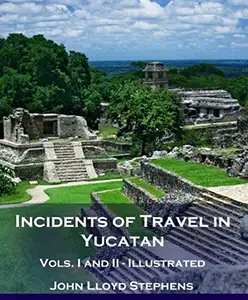
Incidents of Travel in Yucatan Volumes I and II
Paperback Illustrated – 1843
John Lloyd Stephens
Prior to the 1840s, when J. L. Stephens published this superb account of his explorations, the Yucatan was only crudely charted by Western explorers. Yet their descriptions of the odd ruins and beautiful landscape intrigued the young John Lloyd Stephens, who spent years yearning to explore and better chart the faraway lands.
Accompanied by his friend, the architect and draughtsman Frederick Catherwood, Stephens set off for the wilderness of the Yucatan, landing in what is today Belize. It wasn’t long before the pair encountered the first Mayan ruins: the city of Copan. Captivated by the unique architecture and distinctive cultural remnants, the two pressed further inland.
Following Stephens’ explorations, the Mesoamericas became a place of great interest to North American and European intellectuals.
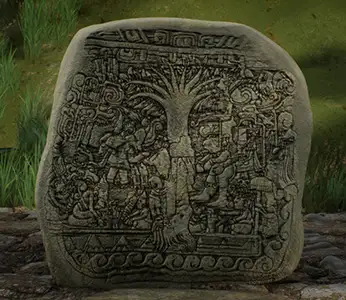
STELA 5, IZAPA, CHIAPAS, MEXICO: A Major Archaeological Discovery of the New World
M. Wells Jakeman PhD
“Some years ago there occurred a little-publicized discovery in American archaeology, that now promies to surpass in importnace all the other findings made to date in this field of study” – M. Wells Jakeman, 1958
